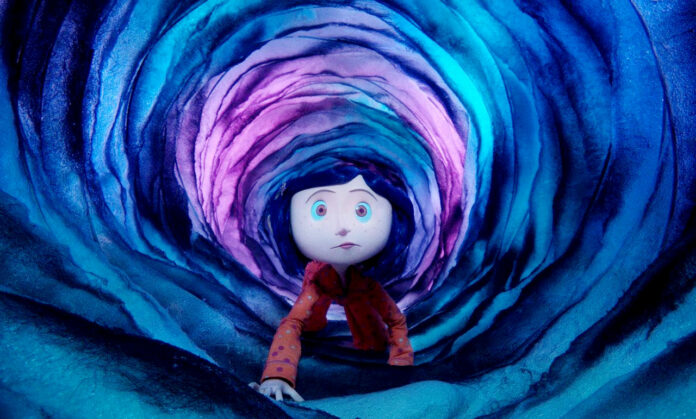How the genre can provide another outlet for kids’ fears
By ADHITHI ANJALI — arts@theaggie.org
What do “Friday the 13th” and “Courage the Cowardly Dog” have in common? What about “Coraline” and “It?” While the amount of gore definitely varies, they are all undoubtedly horror stories that bring their viewers to the limit of their anxieties. Of course, if you watched “Courage the Cowardly Dog” or read “Coraline” now, you might not be inundated with the fear it is supposed to instill in its intended audience: young children.
One might ask why the same kids pacified by an episode of “Arthur” should be exposed to horror at all. After all, the genre’s most quintessential examples contain violence and blood. “Videodrome” and “Parasite” probably present a completely incomprehensible form of horror for the child. The appeal of these films likely comes from a response to the intersection of social and physical fear — the idea that there are forces beyond your control acting on your body. (For more insight on this aspect of horror, check out “Powers of Horror” by Julia Kristeva.)
But, a young child — by which I mean 10 years old or younger — arguably does not have a concrete conception of the social constructions that produce fear and loss of autonomy, like the panic about sex in “Friday the 13th” or class conflict in “Parasite.” However, horror is still present in childhood: the monster in the closet, the ghost in the hall, the dark horizon after sunset when you can still make out someone — or something.
These fears still reflect the unnamable lack of control a child feels when they understand that there is an unknown, perhaps unimaginable, aspect to their world. And yet, the only response is to imagine what it possibly could be.
Whereas we can enjoy the catharsis of horror, as we see the unraveling of order take place rather than remaining struck by the debilitating fear that something is wrong, children seem to lack a new and unique outlet for their daily encounters with the unfamiliar. Children also inhabit a world designed for and by adults. Can you recall the feeling of being left out of the loop, knowing there were larger pieces in place that moved you before you could think for yourself?
What children’s horror can do is offer an outlet that acknowledges that fear. “Coraline” understands the limits of a child’s power in their family and recognizes these feelings of being trapped and helpless. Even the regular ghost story communicates that your fear is not unaccounted for. For a time, it might give you something new to be afraid of, but it confirms a secret truth: that there are unknown and unimaginable possibilities in this world, good or bad.
A child can often see the gap in their knowledge of the world. They may not understand this gap, but they are able to recognize a discrepancy between the way they respond to a closed door and the way their parents might react. Horror offers a bridge for that gap, saying, “Yes, there is something scary behind it, but the only way to know is to test it.”
Of course, there are aspects of horror in other children’s media. Various books I remember reading laid out war, death and other forms of violence, but fear was not often at the forefront of the creation of that work. However, a good horror book or film hinges on these uncomfortable feelings to produce terror and wonder.
In the same way, many adults find pleasure and thrill in consuming media designed to capitalize on our fear, there are children who can sense that fight-or-flight response and want to test it. Courage, too, lived in a world not designed for him, but he had to face it every day. Children’s horror can provide a space for kids to do the same.
Written by: Adhithi Anjali — arts@theaggie.org





